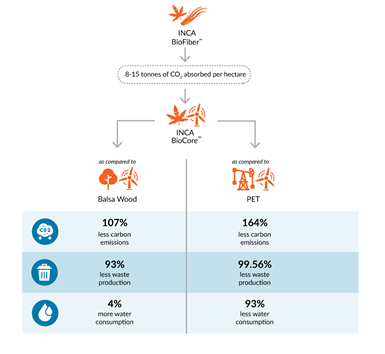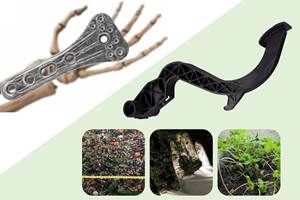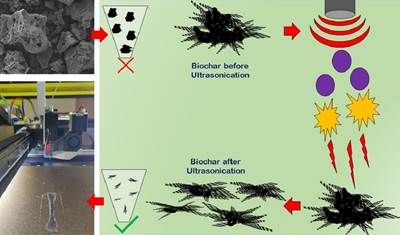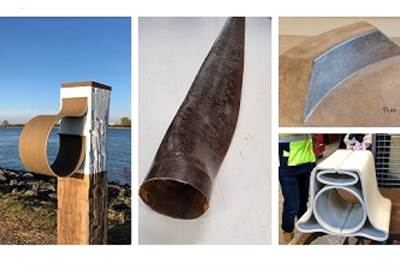INCA Renewtech awarded $10 million to invest in commercial biocomposites facility
Under Alberta’s Circular Economy Projects, INCA will construct and operate a facility for processing and manufacturing waste hemp into BioPlastics and Biocore composite materials for wide industry use.
Share
The government of Alberta (Canada) is advancing the province’s global leadership in the circular economy by committing $58 million through Emissions Reduction Alberta (ERA) to projects across the province worth $528 million. Under the ERA’s Circular Economy Challenge, INCA Renewable Technologies (Kelowna, Canada) has been awarded a $10 million grant toward constructing and operating what is reported to be a first-of-its-kind commercial processing and manufacturing facility to process waste hemp stalk from hemp grown for protein and manufacture it into BioPlastics and BioCore — a core material that can be deployed instead of rainforest balsa wood and petroleum-based PET in wind turbine blades and marine cores.
In addition to these developments, INCA says processed fiber will be shipped to Indiana, where it will be manufactured into biocomposite prepreg and BioPanels for the automotive and RV industries (see “INCA Renewtech to build advanced biocomposites manufacturing facility in Alberta, Canada”). INCA currently has commercialization partnerships with Gurit (Wattwil, Switzerland and Bristol, R.I., U.S.), Toyota North America (Plano, Texas, U.S.) and Genesis Products (Elkhart, Ind., U.S.) and its customer Winnebago Industries (Forest City, Iowa, U.S.). Joint development agreements with Canadian- and U..S-based polymer producers are also under finalization.
“This funding will enable INCA Renewtech to significantly accelerate construction of our state-of-the-art hemp processing and composites manufacturing factory,” David Saltman, chairman and CEO, INCA Renewtech, says. “We will purchase waste straw from farmers currently growing hemp for plant-based protein and transform this renewable resource into advanced biocomposites for the automotive, marine, wind energy and consumer plastics industries.”
The Circular Economy Challenge projects support waste reduction, material and feedstock substitution, value recovery and reduction of the lifecycle environmental footprint of materials and products — producing high-quality fertilizer for farmers, recycling asphalt from roof shingles, sequestering carbon in concrete and novel plastics recycling are some examples of the technology solutions receiving funding. Ultimately, these technology solutions can reduce the impacts of material production, processing and disposal. The innovations invested in will support industry competitiveness, new venture creation and economic diversification.
If successful, the projects will reportedly result in cumulative greenhouse gas (GHG) reductions of up to four million tonnes by 2050 — equal to offsetting the GHG footprint of 1 million homes. Circular Economy Challenge funding is expected to create 1,835 person-year jobs in Alberta and have a $350 million GDP impact in the province by 2025.
The investment aligns with provincial initiatives including the proposed Extended Producer Responsibility (EPR) approach, the agricultural plastics recycling initiative and the Natural Gas Vision and Strategy’s goal to establish Alberta as a center of excellence for plastics diversion and recycling
“A more sustainable, diversified provincial economy requires using our resources more wisely, we need to think about waste as a resource rather than a cost,” Justin Riemer, CEO, Emissions Reduction Alberta, adds. “This investment in converting waste into other uses is going to make a real difference.”
Projects were selected through ERA’s competitive review process. A team of experts in science, engineering, business development, commercialization, financing and GHG quantification conducted an independent, rigorous, transparent review overseen by a Fairness Monitor.
All ERA funding recipients are required to produce a final outcomes report that is shared publicly for the broader benefit of Alberta, as well as other funding proposals. Funding recipients will be required to report on project outcomes, achievements and lessons learned including GHG reductions, job creation and other environmental, economic and social benefits.
All funding is sourced from the province’s Technology Innovation and Emissions Reduction (TIER) fund.
Related Content
KCARBON and KIST develop lyocell/PLA/wood biocomposites
Initial demonstration in furniture shows properties two to nine times higher than plywood, OOA molding for uniquely shaped components.
Read MoreOkom wrks labs works with Autodesk for mycelium-based composite commercialization
Research Residency program will further refine material properties and manufacturing processes to support the startup’s efforts of providing high-performance, regenerative biocomposite solutions.
Read MoreBioabsorbable and degradable glass fibers, compostable composite parts
ABM Composite offers sustainable options and up to a 60% reduction in carbon footprint for glass fiber-reinforced composites.
Read MoreEvolving natural fiber technology to meet industry sustainability needs
From flax fiber composite boats to RV exterior panels to a circularity model with partnerships in various end markets, Greenboats strives toward its biomaterials and sustainable composites vision in an ever-changing market.
Read MoreRead Next
New research developments identify new methods for bio-derived carbon filler reinforcement for biocomposites
Sustainable methodologies employed by researchers from Tuskegee University enable the synthesis of carbon from biomass-based precursor materials, and its effective reinforcement in composites.
Read MoreSeaBioComp project develops biocomposite demonstrator products for marine applications
Prototype products explore thermoplastic polymers, natural fibers and 3D printing technologies to effectively reduce the use of fossil-based materials in the marine sector.
Read More“Structured air” TPS safeguards composite structures
Powered by an 85% air/15% pure polyimide aerogel, Blueshift’s novel material system protects structures during transient thermal events from -200°C to beyond 2400°C for rockets, battery boxes and more.
Read More



















.jpg;maxWidth=300;quality=90)








